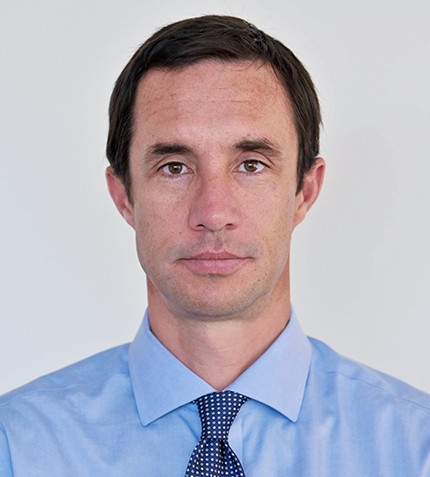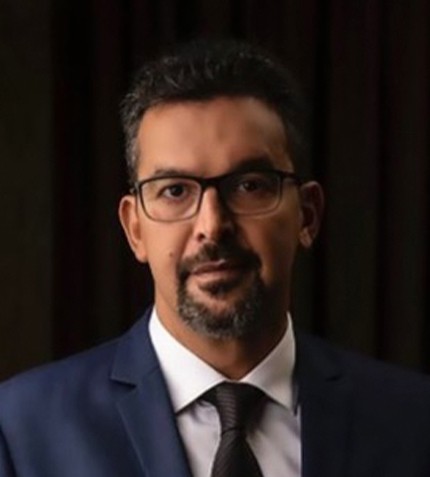
"The industry in Chile needs to solve several challenges: first, our deposits are quite mature, so mineral grades have been falling, hauling distances have been increasing, and the rock has become harder."
Juan Carlos Jobet
BI-MINISTER OF ENERGY AND MINING, GOVERNMENT OF CHILE
What is the vision of the Piñera administration for the mining industry?
Mining is our biggest industry: It represents over 10% of our GDP, more than 50% of our exports, 25% of total investment received, and a big chunk of fiscal revenues for the country. 2020 presented many challenges, the pandemic being the largest one, and the mining sector showed great resilience and capacity to take care of the health and safety of workers, with contagion rates much lower than the average population. That was complemented with business continuity, as we closed 2020 with a copper output in line with 2019 figures. For comparison, copper production in Peru fell by 30% in 2020, so the industry’s performance in Chile was remarkable last year.
Copper has been trading at very high levels in 2021. How can the industry take advantage of this opportunity?
The main opportunity ahead is that projected demand for copper is very big, as global economies progressively migrate from fossil fuels to renewable energies and the usage of electric vehicles continues to increase. In this context, the industry is at the core of global efforts to put a stop to global warming.
To take on this opportunity, the industry in Chile needs to solve several challenges: first, our deposits are quite mature, so mineral grades have been falling, hauling distances have been increasing, and the rock has become harder. In many cases, companies have had to invest significant amounts just to maintain the same levels of production. So, the first challenge is competitiveness and the introduction of new technologies.
The second challenge is sustainability: the industry is already switching from coal power generation to contracts with renewable energy providers, and we expect that more than 60% of the energy used in mining will come from renewables by 2023. Related to this, another issue is water: today, 30% of the water used in the industry is seawater, and that figure should reach 50% by the end of the decade. We also need to improve relationships with the local communities and optimize our environmental management in terms of tailings, glaciers and other aspects.
The Pascua Lama case has put the spotlight on glacier protection. How can the industry coexist with glaciers?
Glaciers are a key freshwater reserve that regulate water flows in the different basins. Their importance is only going to increase with climate change, so they need to be protected. This said, the mining industry can perfectly develop while protecting glaciers. The overlap of mining activities with glacier areas is extremely low, below 1%. There is a legislative bill advancing in Congress, and we believe we are reaching a good point of equilibrium between glacier protection and mining industry development.
Chile is considered to be a ‘mature’ country in terms of exploration. How can the industry continue growing based on new discoveries?
For the last years, our production has been stable but we have not been able to significantly grow our copper output. Chile continues to be the fourth country in the world in terms of exploration investment, with over US$450 million in 2020 alone. However, nearly 85% of that money was spent by majors. As part of our mining policy, we are trying to promote exploration by junior companies, and that involves several aspects, including permitting, access to information, access to funding, and the right framework to incentivize concession holders to really advance their exploration work. If majors are not using their concessions, they should probably bring in partners. However, the mining industry presents a lot of risk so it is important to maintain the rules without abrupt changes.
Do you think the process to rewrite the country’s Constitution will damage investment attractiveness?
At the global level, we have a unique combination of geology and institutional stability. Investors understand that a country that has grown very rapidly over the last 30 years needs to update its regulatory framework to adapt it to the new circumstances. This is a natural process. Interestingly, it is local investors who appear to be more worried. While the process may bring a certain degree of uncertainty, last year alone there were environmental impact assessment approvals for projects worth US$20 billion. The total project portfolio amounts to US$70 billion this decade, and the high price of copper will incentivize the development of further projects.
What will be the impact of Chile’s rapid transformation of its energy matrix towards renewables?
Chile is leaving coal behind as the main source of energy and is replacing it with sun, wind, geothermal and hydro. The following step is to use this cleaner, cheaper energy to replace fossil fuels across the different sectors. We are already electrifying transport and promoting electricity-based heating in houses.
Mining is at the heart of this challenge, as it consumes more than 30% of all the power in Chile, and the industry is already switching to renewable-based power contracts. The challenge is to complement that with energy storage, as renewable energies do not operate 24/7. Secondly, the mining industry uses a lot of diesel in the trucks and other equipment, and batteries and green hydrogen are already appearing as alternatives. Finally, the water challenge is very closely tied to the energy challenge, because the main cost to use seawater (via desalination and pumping) is energy.










